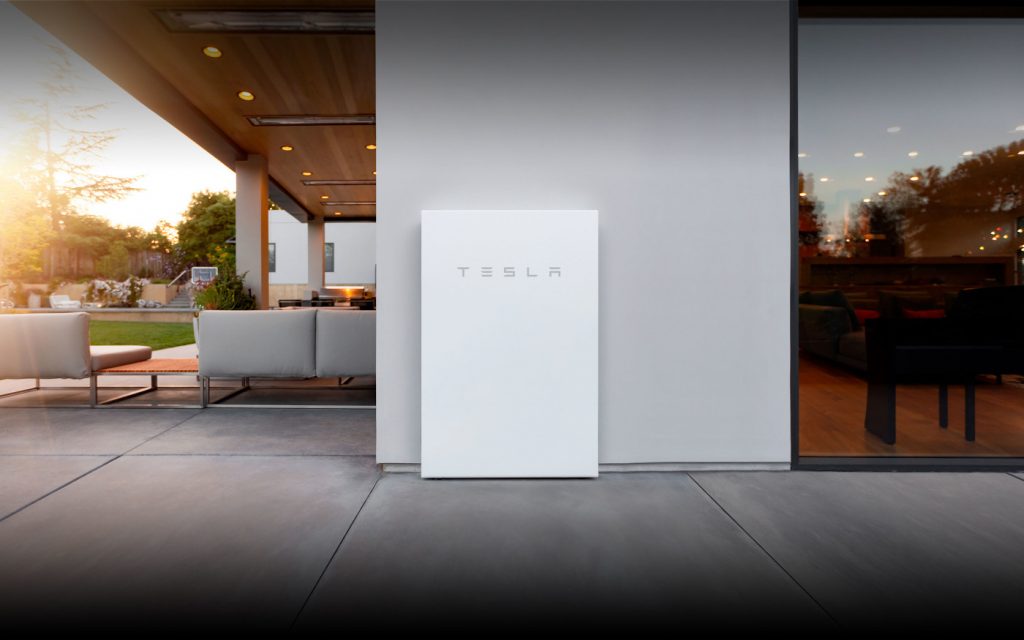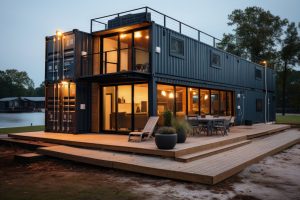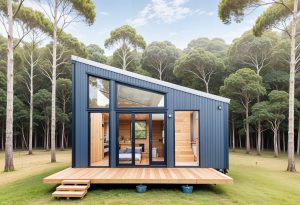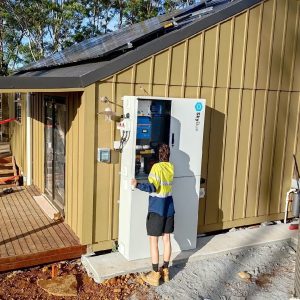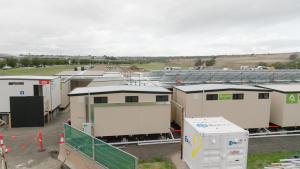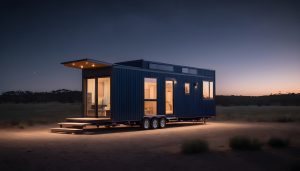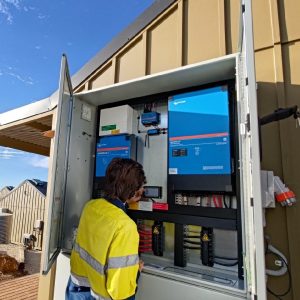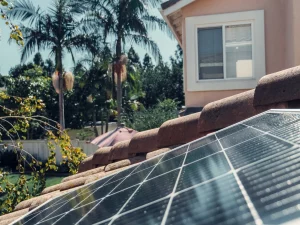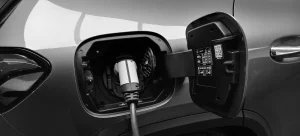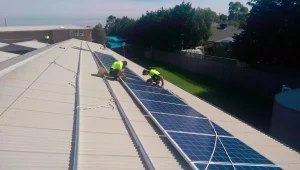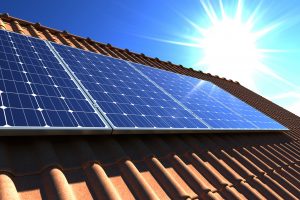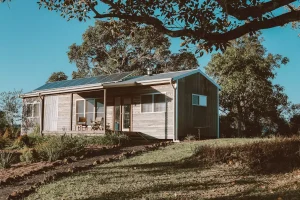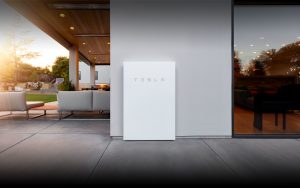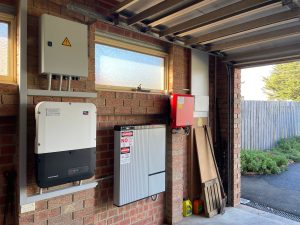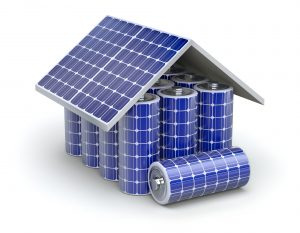Today we are looking at blackout protection what it is and what it does. We’ll also compare some off-grid solar systems and battery inverters to see the different levels of blackout protection across the solar inverter range.
What is blackout protection?
Blackout protection is the ability for your inverter and battery system to supply power to your home when the grid power cuts out, for instance, during a blackout. When the house loses power, you’ll be able to power your home from the solar and battery system keeping the lights, power points and fridges running.
There are a few different specs for blackout protection, the first being ‘continuous power’ output. Continuous power is how much energy a solar and battery inverter can supply for extended periods. During a blackout, when the total power requirement of the home exceeds the output power capability of your solar and battery system, it will actually ‘trip’ the system, and it will turn off your power (even if you have blackout protection).
Having a good grasp of your continuous power requirement for a blackout or off-grid scenario will help you choose an inverter that can give you the steady supply of power you need without overloading or tripping the solar and battery system.
The second consideration, peak power, is how much power a solar or battery inverter can supply for a short amount of time in a high burst. To give a bit of context of peak power, when equipment like water pumps and motors startup, they can draw a tremendous amount of energy for a second or two.
This surge is called the peak draw, or peak supply. Suppose this requirement exceeds the inverter’s continuous power rating, and the inverter doesn’t have a peak output, this surge in power will trip the inverter and turn the whole system off. To counter power surges, some inverters provide a ‘peak’ burst of power to allow you to get things like pumps running until it passes the peak power requirement and returns to lower, continuous power usage.
Considering peak capabilities is essential because even with a robust blackout solution, without peak power capabilities, you may find yourself without power as your ‘peak’ equipment attempts to startup and continually trips out your battery system, leaving you in the dark.
Therefore, it’s essential to know what ‘peak’ and continuous power output you’ll require during a blackout. For example, even a small 500-watt water pump may have a spike current six times the running current, up to 3,000 watts or more, that will trip an inverter if it doesn’t have a peak output capability.
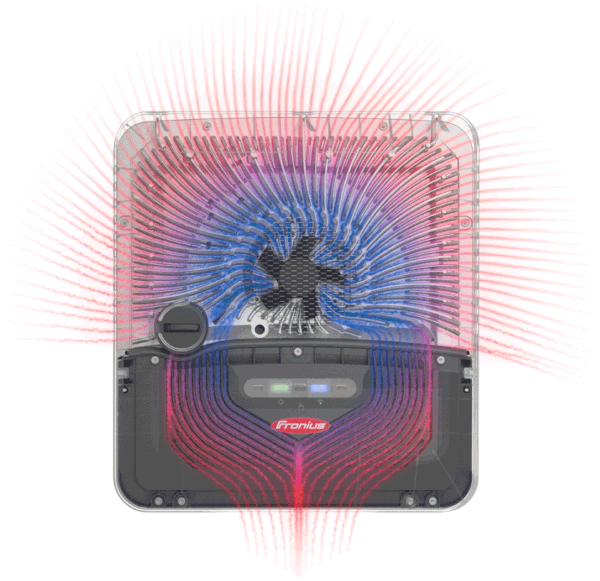
Ensuring the solar and battery inverter can handle your home’s peak and continuous power output demands before investing in an off-grid solar or blackout protection system is the key to a happy off-grid experience.
The third vital spec to consider is ‘switchover time’. Switchover or changeover time is how long it takes an inverter to realise that the grid has turned off (or that a blackout has occurred) and activate your blackout protection.
The switchover time measures how long the home will lose power before switching to ‘off-grid mode. This period usually ranges anywhere from instant changeover (known as UPS) up to a minute or two. When there’s a blackout, the battery kicks in, a UPS feature (or uninterruptible power supply) means there’s no lag time for this change to occur – it’s instant.
UPS is a feature that some battery inverters have, and it’s crucial in particular scenarios where the changeover needs to be instant, as some homes might have medical equipment, fire protection or security equipment that must remain on at all times.
To recap, when looking at continuous power, you’re looking at how much the battery can supply continuously during a blackout, and peak is how much power can ‘spike’ for a short period. If a home’s power requirements exceed either of these two levels, it will potentially trip the battery and turn off the blackout protection to protect the battery and keep it safe. For this reason, sizing up the correct output for a blackout system is essential.
You don’t want the blackout protection restarting or failing whenever particular energy-intensive equipment turns on; choosing the right features and energy capabilities of a backup system is crucial to ensure its stability.
Hot tip: Remember that for some of the inverters in this article, ‘blackout’ protection is an additional add-on and may not come as a standard feature. Ensure it’s included in the quote when purchasing your battery backup system if it’s a feature you require.
Types of Solar Batteries and Backup Inverters
- GoodWe GW5048-ED 5KW hybrid inverter
- Sungrow’s new SH5K-30 5KW hybrid inverter
- Fronius GEN24 5KW hybrid
- SMA Sunny Boy Storage
- Tesla Powerwall 2
- SkyBox entirely off-grid compatible
As we go, keep in mind that these aren’t all solar batteries; they’re solar and battery inverters (which ‘talk’ to and manage your batteries). Today, we’re going to be looking at what the inverters are capable of, not the batteries. We’re going to compare what the inverters can output, especially regarding blackout protection.
While you can usually pair different batteries with most of these inverters, the batteries you choose may influence your output capabilities.
Before we continue, we will be talking a lot about watts of continuous and peak power. For this reason, I want to give you a quick idea about what 1,000 watts can supply to provide you with a ballpark understanding of power requirements.
A hairdryer is usually around 1,000 watts, and a toaster is about 2,000 watts, a gaming PC is around 500 watts. These are all continuous values, meaning this equipment will draw this power fairly consistently and continuously while they are running.
Keep in mind, when it comes to peak power, a 600-watt water pump or motor, when it turns on, for a split second, can spike up to 4,000 – 4,500 watts (about seven times the continuous or running current).
Model: GW5048-ED
Type: Hybrid
Price Range: ? (with 10Kwh battery approx)
Continuous power: 3,600watts
Peak power: 3,600 watts
Switchover time: <10 milliseconds (UPS)
Off-Grid certified: No
The Goodwe Hybrid GW5048-ED, has a continuous supply of 3,600 watts. The spec sheet doesn’t mention that it has any peak supply. Therefore it’s safe to assume that the 3,600 watts are a continuous and peak power rating. Going over that 3,600 will most likely ‘trip’ the inverter because it has no peak power output capabilities.
Interestingly enough, the GoodWe has a switchover time of fewer than ten milliseconds, which means it is a UPS system. It is helpful to keep some essential things powered during a blackout without a dropout or changeover period. The 3,600-watt limit is probably insufficient for things like water pumps or motors, and it’s also not off-grid certified.
Though for the price, it is a good contender for the occasional blackout in a family home that only needs to keep a few power items running, such as the lights and a few power points.
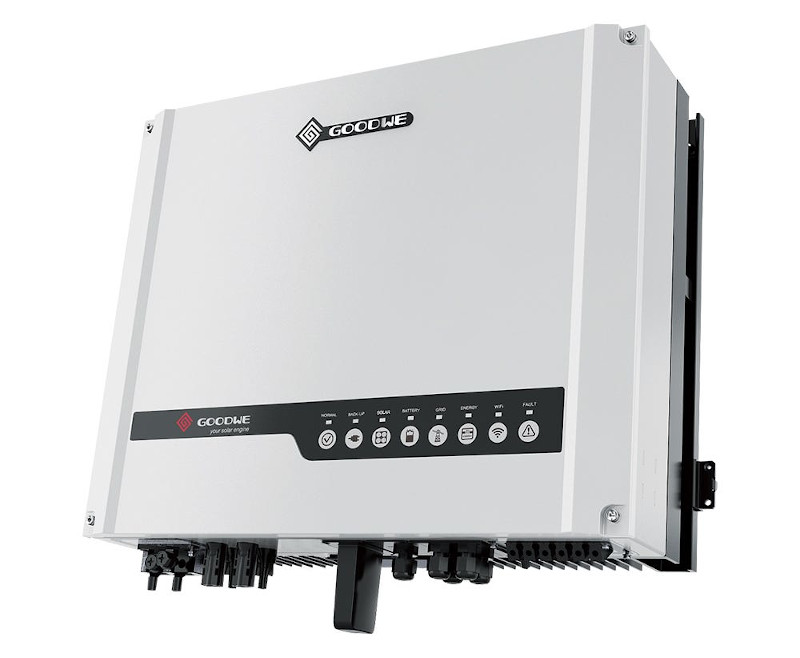
Sungrow SH5K-30
Model: SH5K-30
Type: Hybrid
Price Range: $2,500 – $3,000 (with 10Kwh battery approx $10.5k) + BLACKOUT ($1.5k)
Continuous power: 3,000 watts
Peak power: 6,000 watts/ 10 seconds
Switchover time: 20 milliseconds
Off-Grid certified: No
The new Sungrow SH5K-30, is a well-made inverter. It comes with built-in DC isolators, built-in blackout protection capabilities and 3,000 watts continuous output. This inverter also has a peak output of 6,000 watts for 10 seconds and a switchover time of fewer than 20 milliseconds, which is UPS compliant.
The Sungrow has a solid 6,000-watt peak output for 10 seconds. Fr a small water pump or motor; this inverter would probably handle the peak output, though it’s not off-grid certified.
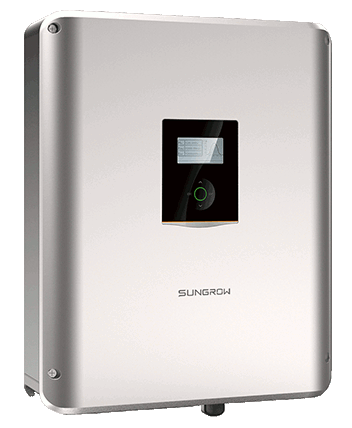
Fronius GEN24 Primo
Model: GEN24 Primo
Type: Hybrid
Price Range: $3,200 – $4,000 (with 11Kwh battery approx $14.8k – $16k) + BLACKOUT ($4k)
Continuous power: 5,000 watts
Peak power: 5,000 watts
Switch-over time: < 90 seconds
Off-Grid certified: No
Next is Fronius’s new GEN24, a 5KW hybrid inverter. Fronius is a well-known brand with a reputation for manufacturing quality products. This inverter has 5,000 watts continuous output.
There aren’t any numbers on the datasheet on its peak output, which means it’s safe to assume the 5,000 watts is a continuous output. If you do exceed 5,000 watts, it will potentially trip the inverter.
The switchover time is less than 90 seconds, which is quite a long switch over time and not UPS compliant, though it has a solid 5,000-watt continuous output during a blackout. This inverter is not off-grid certified.
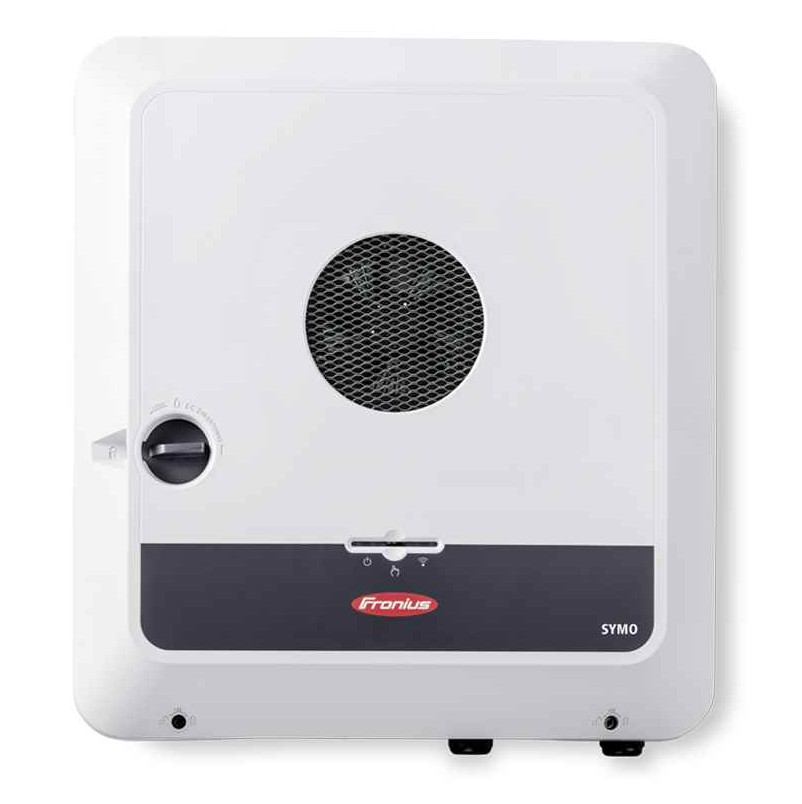
SMA Sunny Boy Storage 5.0
Model: Sunny Boy Storage 5.0
Type: Battery Only
Price Range: $2,600 – $3,200 (with 10Kwh battery approx $13.5k – $14.5k) + BLACKOUT ($4k)
Continuous power: 5,000 watts
Peak power: 6,300 watts
Switch-over time: < 20 seconds
Off-Grid certified: No
The SMA Sunny Boy Storage 5.0 is another well-known brand, with 5,000-watts of continuous output and 6,300-watts peak output for up to a minute. This high power supply means it’s not only useful for things like pumps, but if you were to also turn on other high demand items (like a hairdryer or a toaster) within that same period, it would likely be able to handle the demand.
The switchover time is less than 20 seconds, so again, though a heavy-duty piece of equipment, it’s not UPS compliant nor off-grid certified.
It’s worth noting that SMA does have an off-grid certified inverter called the Sunny Island. However, you cannot use Sunny Island for blackout protection, as it’s for off-grid use only. SMA created The Sunny Boy Storage, a cousin to Sunny Island, as an on-grid battery inverter.
Comparing the Sunny Boy Storage and Sunny Island is fascinating – they’re both very similar battery inverters, made by the same company, but one’s off-grid compatible (the Sunny Island). SMA’s Sunny Boy Storage, while a powerful ‘on-grid’ inverter, doesn’t have that same programming and or generator input to go off the grid.
In other words, it’s not off grid-certified. The fact that international companies like SMA release separate product lines for on the grid (with blackout protection) and off the grid applications is evidence that you need an off-grid certified inverter when you plan on going off-grid or enduring extended blackouts.
Tesla Powerwall 2
Model: Tesla Powerwall 2
Price Range: (with 13.5Kwh Battery approx $15k – $16k) + BLACKOUT GATEWAY ($4k)
Type: A/C Coupled Battery
Continuous power: 5,000 watts
Peak power: 7,000 watts (10 seconds)
Switchover time: 25 – 25 milliseconds
Off-Grid certified: (only if installed by a few, select installers)
The Tesla Powerwall 2 contains the battery and the inverter all in one enclosure. Tesla’s got 5,000 watts continuous output, a peak of 7,000 watts for 10 seconds, that will get you through some spike currents.
Its switch over time is around 25 to 35 milliseconds, which means it has a fast change over time, but UPS’s generally need less than 20 milliseconds to meet the standard. Tesla may or may not work as a UPS; that’s a 50/50 on that one.
Overall, these specs place Tesla with the SMA and SkyBox in the heavyweight division as a quality product and heavy lifter. Tesla Powerwall 2 may be off-grid when installed by a Tesla, off-grid certified installer.
However, at my last check these seem to be few and far between (I had a look last week and there are currently two certified Tesla off-grid installers in all of Victoria, Australia).
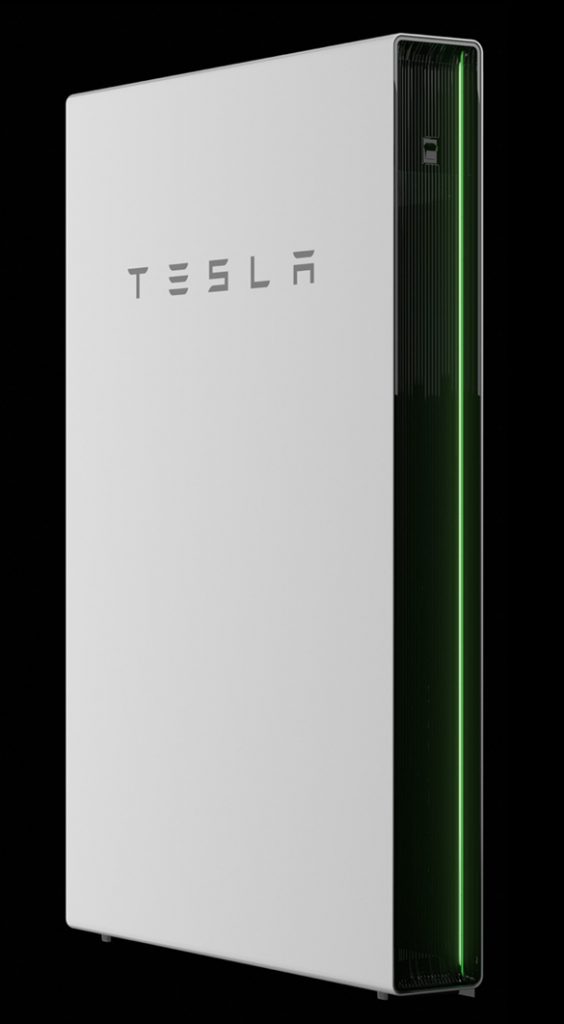
SkyBox
Model: SkyBox
Price Range: (with 10Kwh Battery approx $15k – $25k) INCLUDES BLACKOUT PROT
Continuous power: 5,000
Peak power: 9,000 watts (30 seconds)
Switchover time: <20 milliseconds (UPS)
Off-Grid certified: Yes
The last inverter we’ll look at is Sky Energy’s ‘SkyBox’. The SkyBox has a 5,000-watt continuous output. It has a peak output of 9,000-watts that can last up to 30 seconds. The switchover time is less than 20 milliseconds, meaning it is UPS compliant.
A heavy lifter, perfect for extended blackouts and handling significant spike currents. SkyBox is also off-grid certified and on-grid compatible. This certification means SkyBox can be installed on the grid and endure an indefinite blackout without failing, should one occur.
Skybox also has a generator input for when required. Overall a very robust inverter. You can read more about our SkyBox here.

Going ‘Off the Grid’
There’s one more thing we haven’t discussed across this range of battery inverters: off-grid capabilities. I’m sure people who want to go fully ‘off the grid’ with batteries are reading this. Going off-grid means you want to ‘cut’ the grid forever or be able to run your home ‘off the grid’ indefinitely should the need arise, or potentially you’re already off the grid and looking to upgrade an existing battery system. You can read more about Off-grid and also our customised SkyBox solution here.
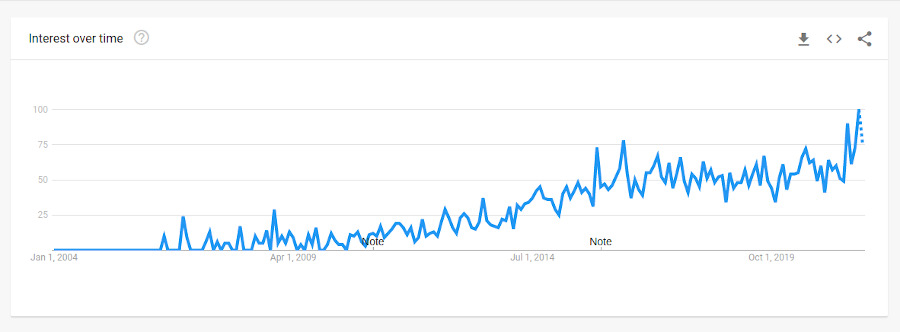
Not all these inverters can take you off-grid. Even though an inverter has a continuous and peak blackout power, it may not be ‘off-grid certified’ or designed to run off the grid. When looking to go off the grid or have the capability to go off the grid in future, you will need an inverter that is off-grid certified, not one that only has blackout protection; these are generally two different things.
What makes an inverter truly ‘off-grid compliant, capable of an indefinite power supply? Because the grid is a fairly stable power supply for technical things like voltage and frequency, it’s simpler for manufacturers to design an inverter used with the grid.
When designing an inverter for extended off-grid applications, engineers need to allow that the inverter may require additional inputs (wind, hydro or a generator) and be able to handle a ‘dirtier’ electricity frequency. A backup generator may be necessary when off-grid or in a blackout for an extended period (more than a day or two). Especially in winter, when the sun may disappear for a few days. The generator, in this scenario, acts as a last resort to top up the batteries.

True, ‘off-grid inverters always have an input for a generator. Secondly, a generator’s frequency can be unstable or ‘dirty’. For example, the voltage may fluctuate between 200 volts and 250 volts. This fluctuation means the off-grid solar inverter needs to handle that variation of input and then be able to convert that into a usable, clean supply to charge your solar batteries and supply your home.
The primary difference between an off-grid inverter and one with blackout protection is that not all inverters with ‘blackout’ protection have the ability for generator input. Hundreds of parameters within an off-grid certified inverter keep it stable when used with no grid for extended periods (or forever).
Unless stated, inverters with ‘blackout’ functions are usually designed to be used primarily on the grid and provide a few hours of blackout protection power now and then. During an extended blackout, a blackout inverter may become unstable and turn off.
Some of these blackout inverters may not come back online until the grid returns. To restart them. It’s important to consider when you want to cut off the grid entirely or endure a blackout for more than a day or two; it’s worth investing a little more money in a battery system that is ‘off-grid certified’.
Do your homework!
As you can now see, there’s quite a wide range of solar blackout and off-grid choices of solar equipment. It’s essential to work out what is most important to you regarding blackout protection and off-grid. If you have medical, fire, or security equipment, consider an inverter with a UPS function.
For a home with water pumps or motors, spike power is something you will need in higher supply. Look for an inverter with increased spike power. Appliances that include pumps and motors are your aircon, fridge, and your freezer.
When you’re looking at solar battery products and shopping around, ask questions about the blackout protection or the off-grid capabilities and make sure blackout protection is in your quote. If not, it’s usually a feature you can add later on. These principles also apply to those looking to build tiny-home and tiny dwellings, go off-grid, or supplement their power requirements.
Generally, you’ll spend a bit more money as you move up the ranks within the world of blackout protection capabilities, all the way up to your off-grid systems that can run indefinitely off the grid.
The best way forward is to calculate your peak and continuous usage and consider whether you might like to go entirely off-grid one day and work your way back from there.
Sky Energy’s team can help you decide which system would suit your needs. You can read more about blackout protection here or alternatively contact the team today to discuss.

